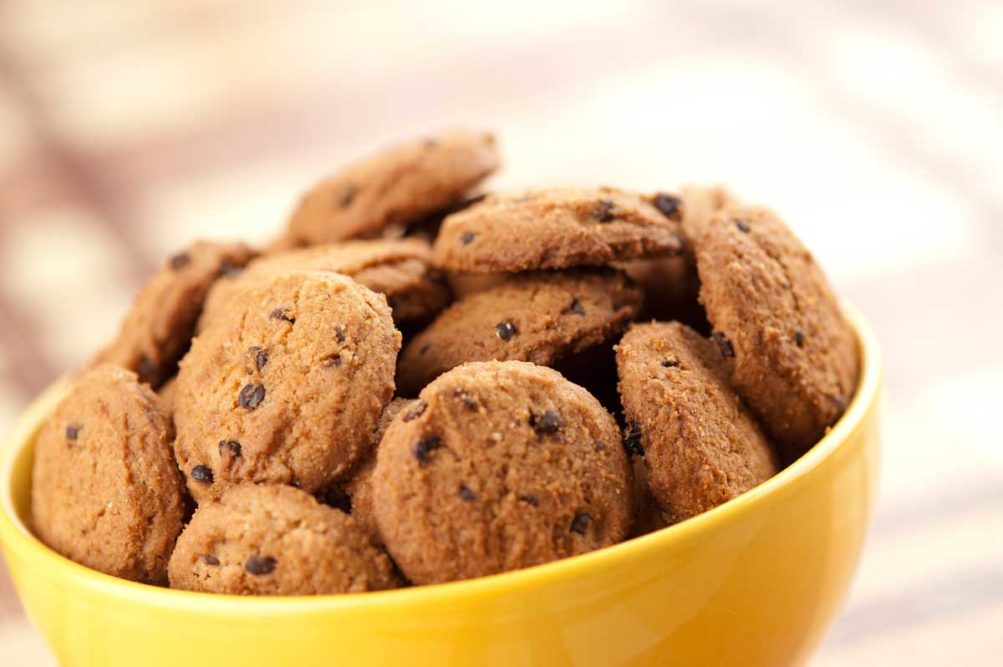Gluten is critical to baked foods; that is no secret. Wheat flour makes up the majority of formulations, and the gluten protein found in it often contributes most of the structure of bread. When it comes to other bakery applications like cookies and cakes, gluten can take a backseat.
“Bread is by far the most complicated application to replace gluten because it gives the bread dough the viscoelastic properties that are required to trap moisture and steam and produce the air bubbles,” said Steven Gumeny, product manager for rice solutions at Beneo. “When you take gluten out of bread, you lose that network and viscoelasticity. With a cake, there is less gluten formation than bread. You need some for crumb structure, but there’s significantly less, and you’re not relying on it solely for oven spring.”
Sweet goods rely on other ingredients like eggs, fat, sugar and chemical leavening to provide structure, rise and flavor. That doesn’t mean there aren’t challenges when creating these gluten-free treats.
“At a high level the pain points are similar in the cases of bread and sweet goods. You’re talking about replacing wheat flour naturally containing the gluten protein, and that’s very functional in sweet goods and bread,” said Sarah Hite, food scientist, Dawn Foods. “Gluten provides structure, elasticity, crumb structure and gas retention and is really critical in bread systems. The impact is different and varied in sweet goods.”
Despite not leaning solely on gluten for their structure and rise, sweet goods have been predominantly made with wheat flour for a reason. It provides consistency, resiliency and a flavor that consumers have long come to expect.
Crispy cookies, for example, are the easiest application to remove gluten. This is because they use more sugar and fat than flour, explained to Leda Strand, manager, snacks, bakery and confections, applications science and technology, ADM. The more flour added to the formulation, the more challenging going gluten-free becomes.
“Soft cookies made with alternative flours can also be challenging to produce because gluten-free flour generates a stiff dough that tends to absorb more than the desired amount of moisture over time,” Ms. Strand said.
Muffins and cakes become more difficult because the starch present in the flour swells, gelatinizes and pastes in order to create the necessary viscosity.
“We will see a greater difference between the functionality of these gluten-free grains, and some additional protein sources may be required to provide function and structure but with a tender bite,” said Nicholas Ahrens, senior product applications technologist, Bay State Milling.
He went on to explain that products requiring more leavening can even collapse, crack or burst if the starches set too early or too late in the bake.
“This is the balance in all baking: having the starch structure set around the same time the air cells burst from the leavening gases that are trapped in the protein or gum matrix,” he said. “To accomplish this, you must balance the leavening, amount of protein/hydrocolloid matrix and starch-setting point.”
Many cakes also have the added challenge of needing the strength to withstand the icing. Its sweetness can cover up flaws in appearance and taste, but if the structure isn’t strong enough, the cake won’t be able to hold up under a layer of buttercream.
“It needs a good structure, but it can’t be too firm,” Ms. Hite said. “It has to be relatively flat. We don’t want high-ratio cakes to be domed.”
The theme across all sweet goods applications, however, is texture. Removing gluten compromises the texture of the finished product. While sweet goods may not rely on gluten for a rise, they need the protein to avoid being gummy, gritty or crumbly.
“When you remove gluten from a sweet good, you lose a lot of the texture that you’re expecting,”
Mr. Gumeny said. “Whether it’s the nice spongy texture in cake or the satisfactory crunch of a cookie, the desired texture can be difficult to duplicate without fine-tuning your ingredients.”
This article is an excerpt from the June 2020 issue of Baking & Snack. To read the entire feature on gluten-free formulating, click here.






